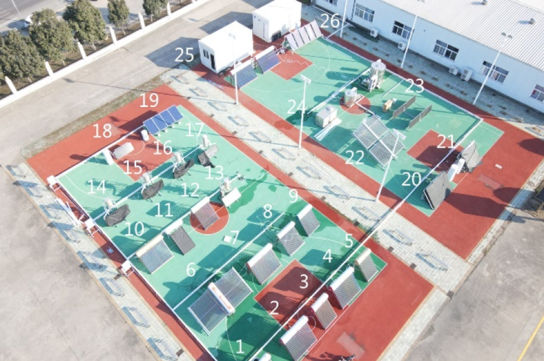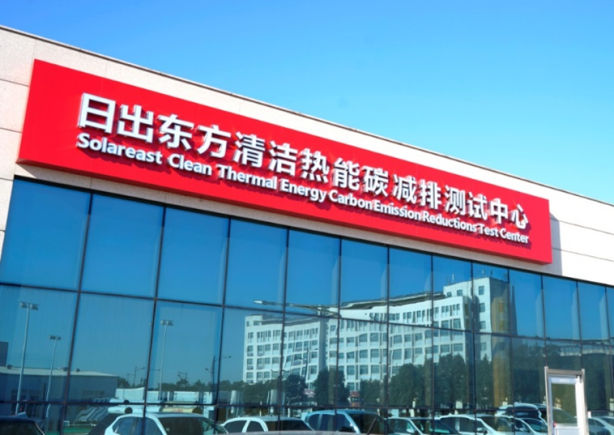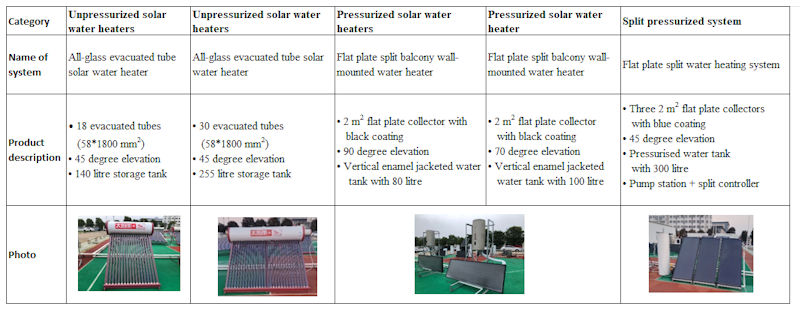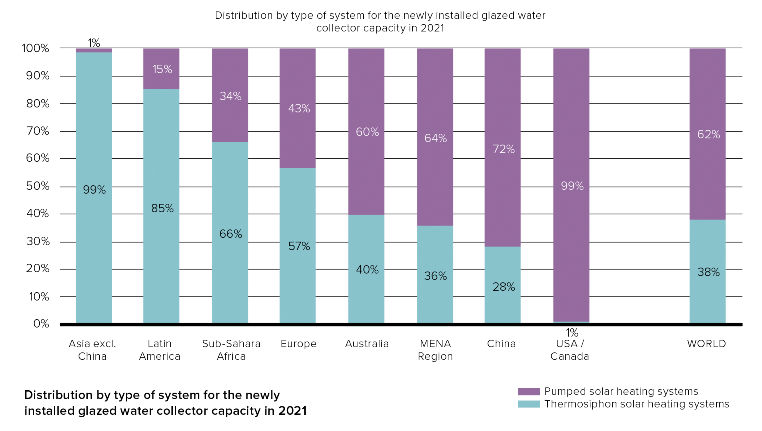Posted: September 12, 2023

Photo: Solareast Group
More than a third of the newly installed collector area in 2021 globally was thermosiphon systems. They dominate sales in many Asian and Latin American countries. The IEA Solar Heating and Cooling Programme’s Task 69, “Solar Hot Water for 2030” is investigating performance and failure modes to provide the technology suppliers with suggestions for improving durability and reliability. As part of Task 69, a large-scale outdoor test of different thermosiphon systems from the Chinese manufacturer Solareast Group could provide interesting information. The tests of solar water heaters will reveal key differences in the performance of unpressurized evacuated tube and pressurized flat plate thermosiphon systems over time and in the real operating environment.
“We measure the systems against the ISO 9459-2 and GB/T 18708-2002 standards and are confident that the test results will support the development and improvement of standards in the future”, said researcher at the Solar Energy Application Center of the China Academy of Building Research (CABR).
The CABR is one of the largest research institutions in China and responsible, among other things, for product standards and product testing in a lot of segments. The Solar Energy Application Center´s focus is testing of solar thermal systems. The CABR planned the tests with Solareast Group. Li’s team participated in the implementation of the test field and will support the analysis of the results. The CABR researchers expect the first results to be available at the end of the year.
At the same time Li is part of the management team of IEA SHC Task 69. There he leads the subtask on thermosiphon collectors, which covers the ultimate question of how the energy-saving and GHG reduction potential of thermosiphon systems can be assessed.

The Solareast Group built and opened the Clean Thermal Energy Carbon Emission Test Center in 2021 at the Company's headquarters in Lianyungang, Jiangsu Province. The outdoor test field is next to the Test Center building at the site.
Photo: Solareast Group
Comparison between tested and modelled performance data
The test field includes residential solar water heaters that have been well-established on the Chinese market for several years (see table below). All the systems are manufactured and offered by Sunrain, one of the brands of Solareast Group. The group also fully financed the construction of the test field and will cover all costs related to the execution of the tests in cooperation with the CABR.

Description of selected, tested systems.
Source: Solareast Group
“We test the systems according to actual operating conditions on a long-term basis by applying a particular load profile typical for residential use,” explained Li. The following data is measured:
- daily thermal yield
- meteorological parameters such as ambient temperature and irradiation
- heat losses
- temperature profile of water discharge
“We combine test methods from both collector standards - the international ISO 9459-2 and the Chinese GB/T 18708-2002 - because the ISO 9459-2 is not quite suitable for testing compact solar hot water systems, which are popular in China,” explained Li. As part of the test project the CABR will then develop a model within ISO 9459-2 to predict long-term performance of particular types of solar hot water systems. The aim is to compare the predicted results with the long-term test results to verify the model. Once the model is verified, we could devise a method to predict annual performance of particular types of solar hot water system and assess the GHG reduction under operational conditions.
Tests to reveal key differences in the performance of solar water heater types
“Due to their large installed base, thermosiphon systems will continue to provide a significant share of the solar hot water through to 2030,” said Robert A Taylor, Professor at the University of New South Wales in Sydney, Australia and co-Task Manager of IEA SHC Task 69. The real underlying aims of Task 69 are to re-invigorate solar hot water technologies by 2030 and to raise awareness that they represent a key to unlocking a net zero economy. According to Taylor, these objectives can only be achieved through a global effort to determine which technologies provide the best fit for their operating environments. This ‘apples-to-apples’ testing campaign by Solareast and the CABR will reveal key differences in the performance of unpressurized evacuated tube and pressurized flat plate thermosiphon systems over time and in the real operating environment. “Aside from providing a lot of useful, novel data, these tests will help Task 69 to analyze the standards for thermosiphon systems and to determine their true greenhouse gas reduction potential in operation,” he summarized.

The share of thermosiphon systems among the newly installed glazed collector area differs a lot depending on the world region. Source: Solar Heat Worldwide 2023
Websites of organizations mentioned in this news article: